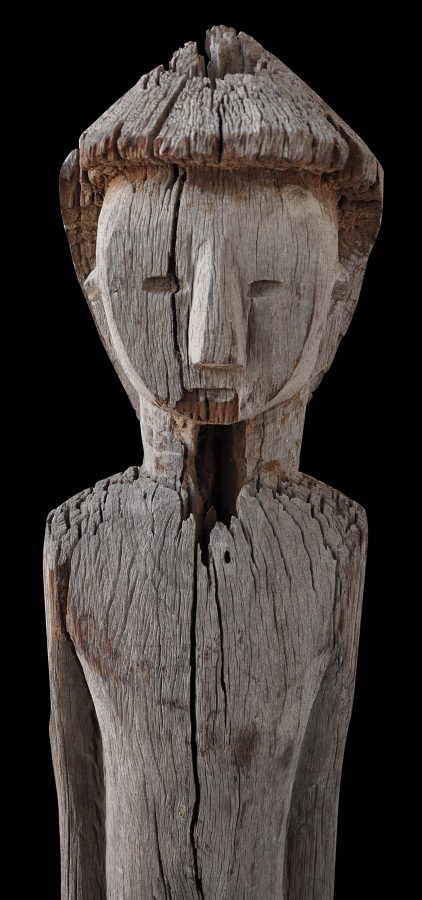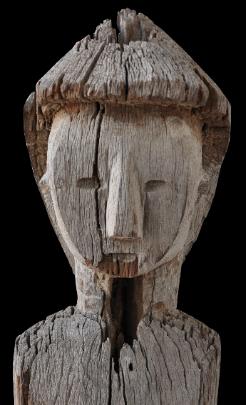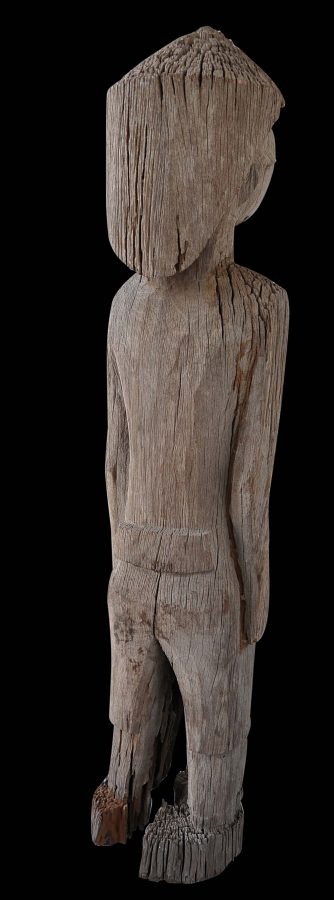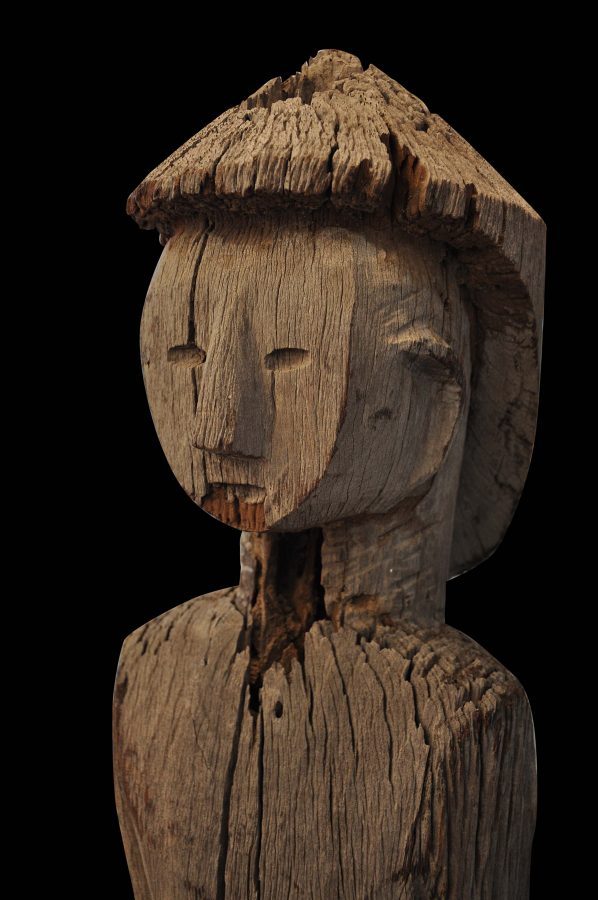Enquiry about object: 1804
Large Jorai Ironwood Ancestor Figure
Jorai People, Central Highlands, Vietnam 19th century
height: 114cm
Provenance
Benneton Collection, France
The Jorai (also known as the Jarai and the Gia Rai) are a minority group based in Vietnam’s central highlands. Theirs is a matrilineal culture – lineage is traced through the mother rather than the father. Traditionally animist, ancestor worship played a big role in traditional Jorai culture.
Most figurative sculpture of the Jorai relates to ancestor worship and funerary rites. The sculptures so generated are known for their moving, time-worn forms.
This splendid, large figure would have been one of a group placed around a Jorai gravesite. Traditional Jorai tombs comprise small hut-like structures in which are placed the possessions of the deceased as well as offerings. Such statuary was created for ceremonies that did not take place at the time of death but often, a long time after the burial. The grave was adorned and then ‘abandoned’ as part of this last farewell. Such statues graced the grave-site atop high poles to serve as spiritual guardians.
Of weathered ironwood, it retains sharp facial features, and wears a conical hat of a type traditionally associated with Vietnamese rice farmers, these being known as a nón lá (leaf hat). The figure also wears a prominent belt. Overall, the dress shows colonial influence. Indeed, among extant Jorai funerary posts, this is an unusually fine example on account of its size, crispness of the carving, head covering, and overall sculptural presence.
The age of the figure is obvious. It was discovered in France, hidden in a large cupboard, and almost certainly came to France during France’s colonial period.
Today, the Jorai number less than 350,000 in Vietnam. They speak their own language, known as Jarai, which is a Malayo-Polynesian language.
Note: the figure is in a stable condition, and has a custom-made stand which stands on the floor so that the statue is displayed at eye level.
References
Capistrano-Baker, F.H., Art of Island Southeast Asia: The Fred and Rita Richman Collection in the Metropolitan Museum of Art, The Metropolitan Museum of Art, 1994.







